
– By Esha Sharma
– Intern IPPCS’21
India and Japan are rapidly advancing towards a comprehensive bilateral partnership in Asia. After the end of World War II and the subsequent independence of India, the two Asian democracies have embarked upon a journey of trust, cooperation and active diplomacy, which has been reiterated by repetitive high-level visits from both the countries and numerous economic and cultural exchanges. However, during the past few years, one area gaining relevance is defence and strategic cooperation. This is due to a convergence of interests and the mutual advantages that India and Japan can derive by establishing solid strategic ties. China gained a stronghold in the South China Sea, being the most significant concern. Apart from this, both countries advocate for a free, open and inclusive Indo-Pacific and maintain a rules-based order where no regional power dominates or controls the oceanic waters. Multipolarity is also a common objective of both India and Japan. Moreover, there are numerous other areas of similar interest to both. Therefore, to strengthen the security of their territories, maritime space and most importantly, their national interest, both the powers realize the necessity of developing a comprehensive strategic partnership.
Ever since diplomatic ties were formalized on April 28, 1952, diplomatic exchanges have continued uninterrupted and are advancing in an upward trajectory. Japanese Prime Minister Nobusuk Kishi visited India in 1957, which was reciprocated by the visit of Indian Prime minister Nehru in the same year. A series of high-level visits followed when in 2000, the visit of Japanese Prime Minister Yoshiro Miro accorded a ‘Global partnership’ status to India-Japan bilateral ties. A significant breakthrough came in India-Japan bilateral ties when this partnership was elevated to a “Global and strategic partnership” by Japanese PM Shinzo Abe and Indian PM Manmohan Singh in 2006. A “joint declaration on security cooperation” was reached in 2008 to lay the foundation of India-Japan strategic ties. It facilitated meetings between defence ministers, military-to-military talks at the director-general or joint secretary-level navy-to-navy staff talks and student exchanges between defence institutions of the two countries. Japanese PM Shinzo Abe has always emphasized consolidating strategic relations with India. He visited India in 2011, where he gave a speech at the Indian Council of World Affairs, which was titled “Two democracies meet at Sea: For a better and Safer Asia”. During his speech, he remarked that “A strong India is in the best interest of Japan, and a strong Japan is in the best interest of India”. After that, in 2014, PM Abe became the first Japanese PM to preside over India’s Republic Day celebrations as a chief guest. Since PM Narendra Modi took office as India’s Prime Minister after the 2014 elections, the India-Japan strategic partnership has witnessed more active participation. PM Modi chooses Japan as his first destination for bilateral visits outside India.
This visit in September 2014 culminated in the signing of the Tokyo Declaration that transformed their partnership into a “Special Strategic and Global Partnership”, which was termed by both sides as the dawn of a new era in India-Japan relations. In the same year, under PM Abe, Japan changed its arms export policy, removing restrictions on exporting Defense equipment and technology transfer. To develop defence industry and technology cooperation, a Bilateral agreement on the Transfer of Defense Equipment and Technology as part of the “Special strategic and global partnership” came into being in 2016. The first of its kind Defense Industry Forum was organized between India and Japan in December 2017. To further strengthen their defence ties, PM Shinzo Abe agreed to India’s procurement of US-2i amphibious aircraft. Shin Maywa, the manufacturer of the plane, even proposed to set up a plant in India to facilitate technology transfer. During the 13th India-Japan annual summit held in 2018, PM Modi and PM Abe agreed to formulate a two plus two dialogue with Japan, making it the second country after the US with which India wishes to engage in such a significant manner. Its inaugural session took place on November 30 2019, in New Delhi, when the Defense Minister of India, Rajnath Singh and the External Affairs Minister, S. Jaishankar, met their Japanese counterparts Minister of Defense, Taro Kono and Foreign Affairs Minister Motegi Toshimitsu. Another remarkable event occurred when the commissioner of ATLA (Acquisition, Technology and Logistics Agency of Japan), Mr Nobuaki Miyama, attended the Aero India 2019 event in Bengaluru from 22-24 February 2019. The India-Japan Defense Industry Business Forum was also held on Aero India 2019 at Bengaluru on February 23 2019.
An essential and inseparable component of India-Japan strategic relations is Maritime security. Both the countries are extensively dependent on the trade carried out through the Sea Lanes of Communications (SLOCs). Japan gets around 90 per cent of its oil requirements from the Persian Gulf. Similarly, India imports approximately 80 per cent of its oil from OPEC countries. The two most significant chokepoints are the Strait of Malacca and Hormuz. It is believed that about 33 per cent of world trade and 50 per cent of oil exports transverse through these Sea routes. India is geographically positioned between these two sea routes, and therefore it is a point of focus for Japan. Another significant dimension of Strategic maritime cooperation in the Indo-Pacific spans both the Indian Ocean and the Pacific Ocean. Japan and India both have vested strategic and economic interests in this region. Therefore, the rising Chinese assertiveness in the South China Sea is an area of concern for both of them. Japan already has a dispute with China over the Senkaku/Taiyou Islands, which China claims as part of its territory. India and Japan are always willing to collectively work for regional peace and stability in the Indo-Pacific, for which they are strengthening their defence and strategic cooperation.
In 2007, PM Abe offered to form an India-Japan-Australia-USA Quadrilateral grouping to enhance multistate collaboration and dialogue to address critical concerns corresponding to maritime security. A part of this is the Malabar exercise which started between India and the US in 1992. Japanese Navy first participated in the Malabar naval exercise in 2007, becoming a trilateral joint exercise between India, the US, and Japan. But soon, this initiative got a setback because of the Chinese factor. However, Japan was re-admitted into the Malabar exercise in 2015 as a permanent member. The recent edition of the Malabar exercise took place in the Philippine Sea, which also saw the participation of Australia projecting the willingness of all the four democracies to increase regional peace and stability through better cooperation between the navies of these countries along with enhancement of maritime operations, anti-submarine operations and warfare tactics to tackle the existing naval threats. Various other bilateral joint military exercises between India and Japan seek to strengthen their security cooperation in the territorial and maritime domain. The 4th edition of biennial exercise JIMEX was held from 26-28 September 2020 in the North Arabian Sea between the Indian Navy and the Japanese Maritime Self-Defense Force (JMSDF). This exercise has been conducted regularly since January 2012 under the genesis of increasing maritime security cooperation. Exercise ‘Dharma Guardian’ occurs annually between the Indian Army and the Japanese Ground Self Defense Forces (JGSDF). It started in 2018, and the 2nd edition was held recently from October 19 to November 2, 2019, at Counter Insurgency and Jungle Warfare School, Vairengte in Mizoram.
The closing ceremony even saw the presence of the Chief of Staff of JGSDF Gen Goro Yuasa. This exercise takes place at the platoon level focusing on counter-terrorism operations and warfare tactics. The Indian Air Force and the Japanese Air Self Defense Force (JASDF) also conduct the Exercise ‘Shinyuu Maitri’ to enhance joint mobility and tactical interoperability between the two air forces. In 2019, it was held from 17 to October 23 at Air Force Station, Arjan Singh in Panagarh town in West Bengal. Besides this, the coast guards of India and Japan annually engage in Exercise ‘Sahyog Kaijin’. The Japanese Coast Guard Vessel Echigo paid a 5-day goodwill visit to India on January 13 2019, and the 19th Exercise Sahyog Kaijin was held near the Chennai coast in India. General Bipin Rawat, the then Chief of Army Staff of India, embarked upon a four-day visit to Japan from 3-7 December 2019. The army chief interacted with the Japan Ground Self Defense Force (JDSF) and met Japanese Defense minister Taro Kono. Discussions on expanding defence cooperation and issues about the security of Indo-pacific were actively discussed, highlighting the growing bilateral engagement of India and Japan. A strategic partnership is incomplete without the supply of military logistics. Therefore Tokyo and New Delhi are seriously considering the Acquisition and Cross-Servicing Agreement (ACSA) for this designated purpose.
During the past few years, India-Japan strategic ties have gained momentum, for which a considerable share is credited to the personal friendship of the leaders of the respective nations. Both PM Narendra Modi and Shinzo Abe hold a similar outlook on various regional and international concerns, with the most important being accelerating terrorism, extremist, maritime challenges, regional and global peace, and other potential threats that challenge national sovereignty and integrity of their respective nations. Under this, both must solidify their existing strategic terms, trespassing all the hurdles. One of the most evident multilateral platforms to rapidly increase their defence and security cooperation amongst themselves and other like-minded nations is the Quadrilateral security dialogue between India, Japan, Australia and the USA. Japan has laid continuous emphasis on regular dialogue and deeper cooperation amongst these four large democracies of the Indo-Pacific. They must also adopt aligned approaches and support agendas beneficial to international and regional forums.
The conclusion is that both Tokyo and New Delhi must strive toward an enhanced and complete strategic partnership that will accumulate traditional but non-traditional security threats. For this, their cooperation should include both conventional and non-conventional tactics. At last, Asia’s changing geopolitical and economic dynamics require both the powers to come together to balance the regional equilibrium while maintaining a well-organized and rules-based system and ensuring peace & development of the whole region.
References
https://link.springer.com/content/pdf/10.1057/s41311-021-00288-2.pdf
https://www.icwa.in/show_content.php?lang=1&level=3&ls_id=5362&lid=3383
https://mea.gov.in/Portal/ForeignRelation/India-Japan_Bilateral_Brief_feb_2020.pdf

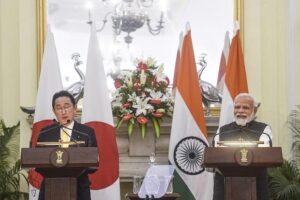

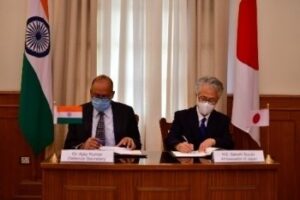
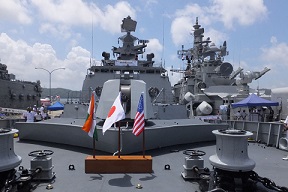
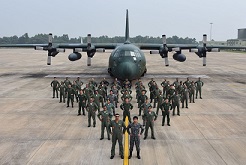

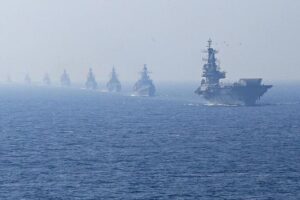

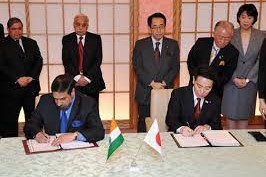

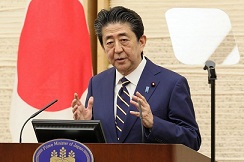
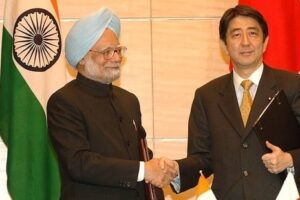

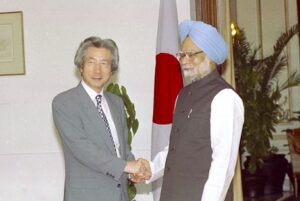
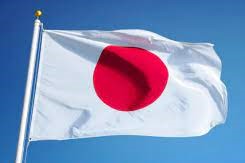
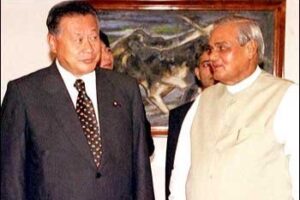
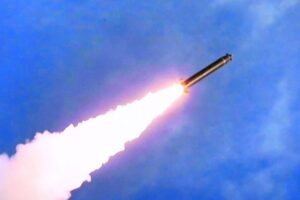
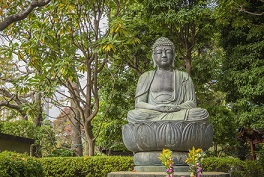



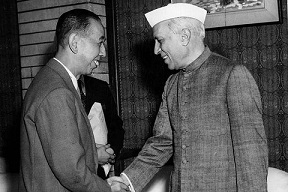
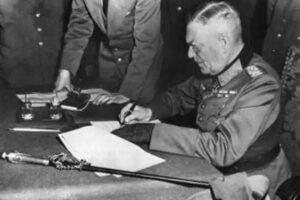


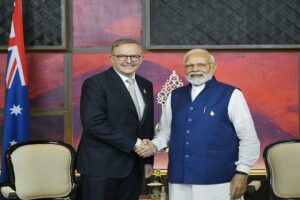



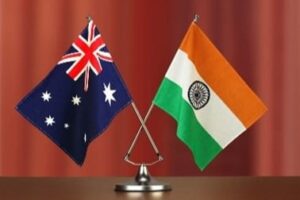
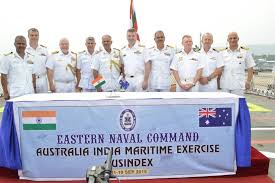

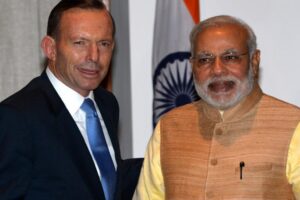
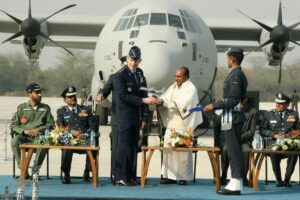



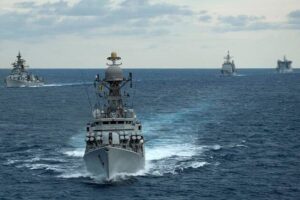
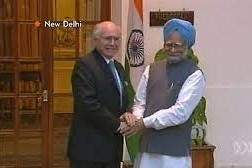
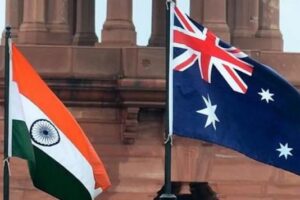
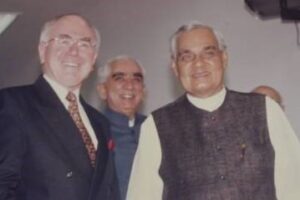

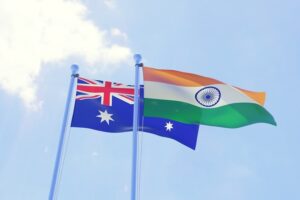

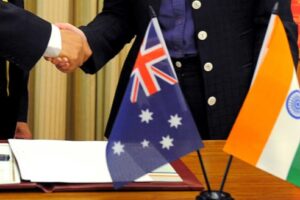

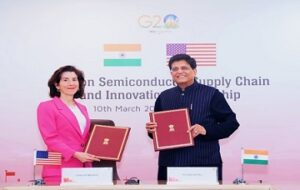
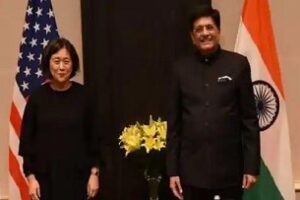
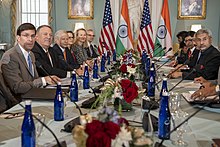

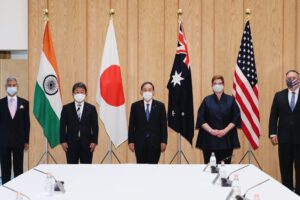

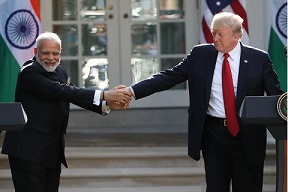
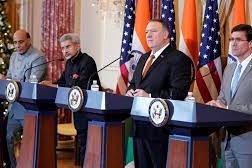

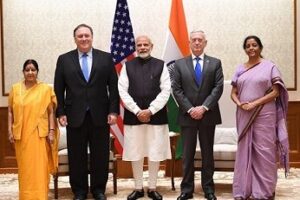
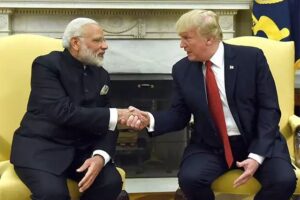
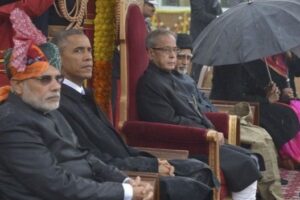

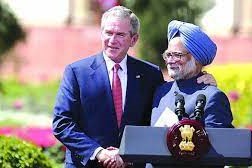
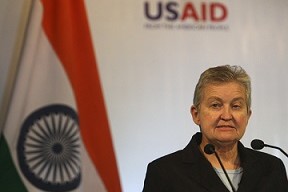
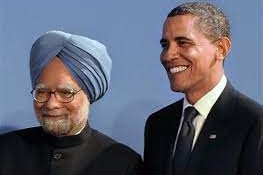
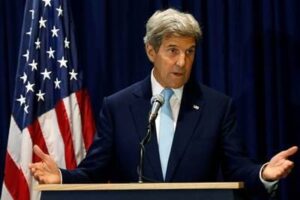

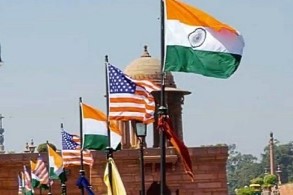
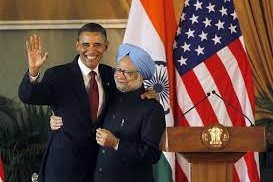
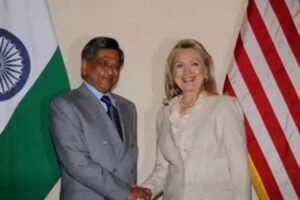
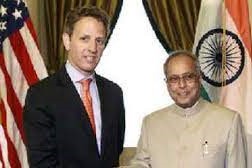
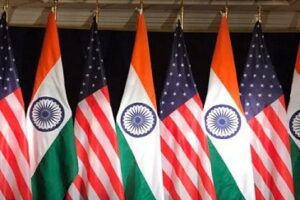
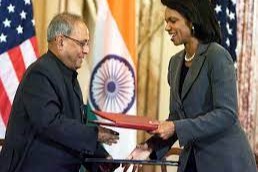

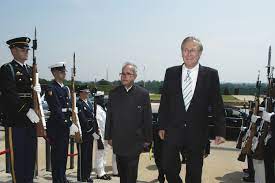


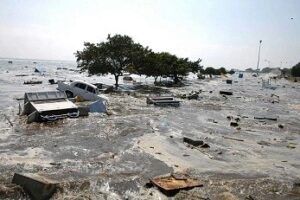

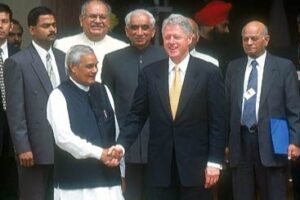
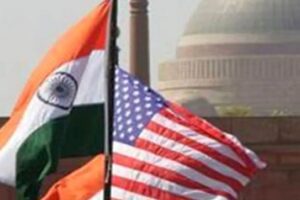
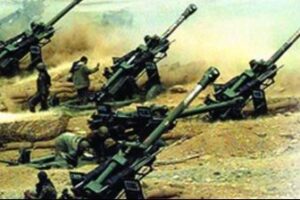
 onducted a total of five underground nuclear tests, breaking a 24-year self-imposed moratorium on nuclear testing. Pakistan followed, claiming 5 tests on May 28, 1998, and an additional test on May 30. The unannounced tests created a global storm of criticism, as well as a serious setback for decades of U.S. nuclear nonproliferation efforts in South Asia. On May 13, 1998, President Clinton imposed economic and military sanctions on India, mandated by Section 102 of the Arms Export Control Act (AECA), and applied the same sanctions to Pakistan on May 30. Some effects of the sanctions on India included: termination of $21 million in FY1998 economic development assistance; postponement of $1.7 billion in lending by the International Financial Institutions (IFI), as supported by the Group of Eight (G-8) leading industrial nations; prohibition on loans or credit from U.S. banks to the government of India; and termination of Foreign Military Sales under the Arms Export Control Act. Humanitarian assistance, food, or other agricultural commodities are excepted from sanctions under the law.
onducted a total of five underground nuclear tests, breaking a 24-year self-imposed moratorium on nuclear testing. Pakistan followed, claiming 5 tests on May 28, 1998, and an additional test on May 30. The unannounced tests created a global storm of criticism, as well as a serious setback for decades of U.S. nuclear nonproliferation efforts in South Asia. On May 13, 1998, President Clinton imposed economic and military sanctions on India, mandated by Section 102 of the Arms Export Control Act (AECA), and applied the same sanctions to Pakistan on May 30. Some effects of the sanctions on India included: termination of $21 million in FY1998 economic development assistance; postponement of $1.7 billion in lending by the International Financial Institutions (IFI), as supported by the Group of Eight (G-8) leading industrial nations; prohibition on loans or credit from U.S. banks to the government of India; and termination of Foreign Military Sales under the Arms Export Control Act. Humanitarian assistance, food, or other agricultural commodities are excepted from sanctions under the law. 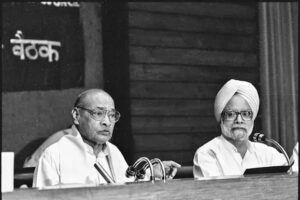
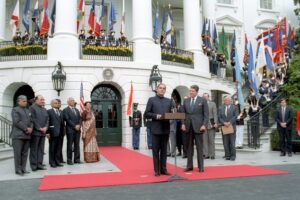
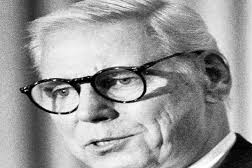
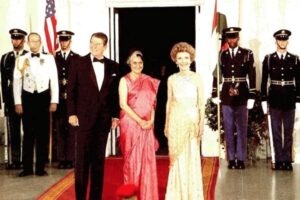

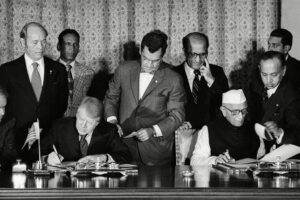
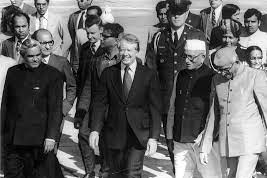
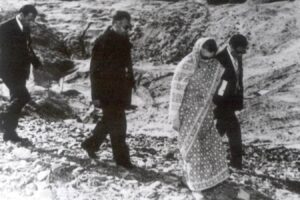
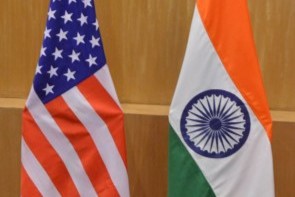

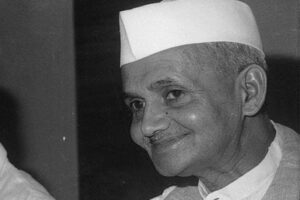

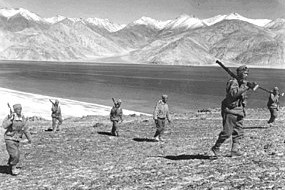
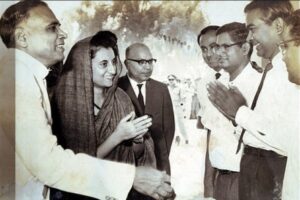
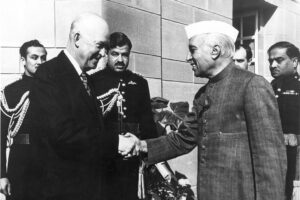

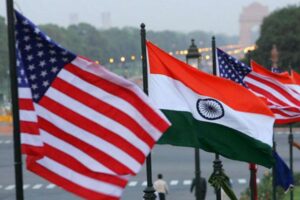
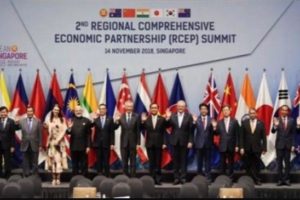 The first ministerial level meeting of QUAD was held on the sidelines of the United Nations General Assembly in New York. Before this, the QUAD had
The first ministerial level meeting of QUAD was held on the sidelines of the United Nations General Assembly in New York. Before this, the QUAD had AusIndEx is an exercise between India and Australia which was first held in 2015.The Australian
AusIndEx is an exercise between India and Australia which was first held in 2015.The Australian 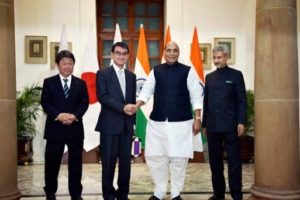



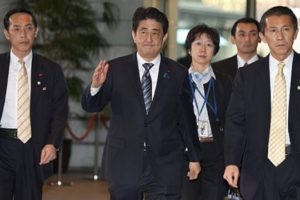
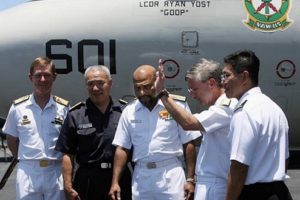
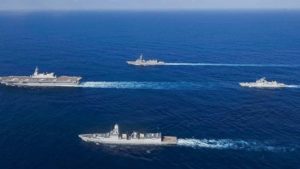

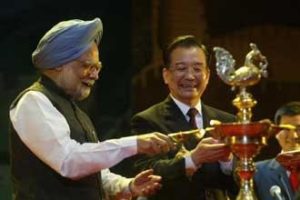 On recommendations of the Japanese government, the four countries met at Manila, Philippines for ASEAN Regional Forum (ARF) originally, but also ended up having a meeting of what we call the first meeting of four nation states on issues of
On recommendations of the Japanese government, the four countries met at Manila, Philippines for ASEAN Regional Forum (ARF) originally, but also ended up having a meeting of what we call the first meeting of four nation states on issues of 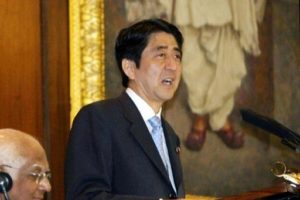 On his official visit to India, Japanese PM Mr. Shinzo Abe reinforced the ties of two nations, i.e., Japan and India with his famous speech about
On his official visit to India, Japanese PM Mr. Shinzo Abe reinforced the ties of two nations, i.e., Japan and India with his famous speech about  In 2007, Japanese President Shinzo Abe resigned from his post citing health reasons. This had a significant impact on QUAD as he was the architect & advocate of QUAD. His successor, Yasuo Fukuda, did not take up QUAD with such zeal leading to dormancy of the forum. (
In 2007, Japanese President Shinzo Abe resigned from his post citing health reasons. This had a significant impact on QUAD as he was the architect & advocate of QUAD. His successor, Yasuo Fukuda, did not take up QUAD with such zeal leading to dormancy of the forum. (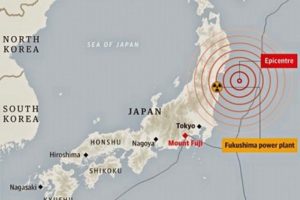 Japan earthquake and tsunami of 2011, also called Great Sendai Earthquake or Great Tōhoku Earthquake, was a 9.0 magnitude earthquake which struck below the floor of the Western Pacific at 2:49 PM. The powerful earthquake affected the northeastern coast of Honshu, Japan’s main island, and also initiated a series of large tsunami waves that devastated coastal areas of Japan, which also led to a major nuclear accident. Japan received aid from India, US, Australia as well as other countries. US Navy aircraft carrier was dispatched to the area and Australia sent search-and-rescue teams.
Japan earthquake and tsunami of 2011, also called Great Sendai Earthquake or Great Tōhoku Earthquake, was a 9.0 magnitude earthquake which struck below the floor of the Western Pacific at 2:49 PM. The powerful earthquake affected the northeastern coast of Honshu, Japan’s main island, and also initiated a series of large tsunami waves that devastated coastal areas of Japan, which also led to a major nuclear accident. Japan received aid from India, US, Australia as well as other countries. US Navy aircraft carrier was dispatched to the area and Australia sent search-and-rescue teams. 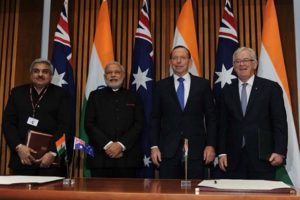 India and Australia signed the
India and Australia signed the  The India-Japan Agreement for Cooperation in the Peaceful Uses of Nuclear Energy was signed on 11 November, 2016 and came into force on 20 July, 2017 which was representative of strengthening ties between India and Japan. Diplomatic notes were exchanged between Dr. S. Jaishankar and H.E. Mr. Kenji Hiramatsu, Ambassador of Japan to India. (
The India-Japan Agreement for Cooperation in the Peaceful Uses of Nuclear Energy was signed on 11 November, 2016 and came into force on 20 July, 2017 which was representative of strengthening ties between India and Japan. Diplomatic notes were exchanged between Dr. S. Jaishankar and H.E. Mr. Kenji Hiramatsu, Ambassador of Japan to India. (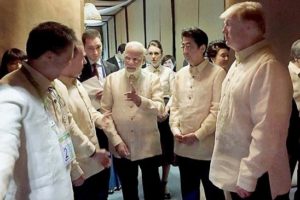 The foreign ministry
The foreign ministry The Officials of QUAD member countries met in Singapore on November 15, 2018 for consultation on regional & global issues of common interest. The main discussion revolved around connectivity, sustainable development, counter-terrorism, maritime and cyber security, with the view to promote peace, stability and prosperity in the
The Officials of QUAD member countries met in Singapore on November 15, 2018 for consultation on regional & global issues of common interest. The main discussion revolved around connectivity, sustainable development, counter-terrorism, maritime and cyber security, with the view to promote peace, stability and prosperity in the 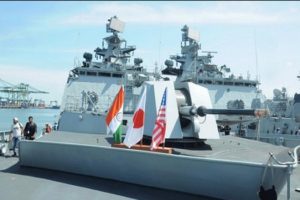 The 23rd edition of trilateral Malabar maritime exercise between India, US and Japan took place on 26 September- 04 October, 2019 off the coast of Japan.
The 23rd edition of trilateral Malabar maritime exercise between India, US and Japan took place on 26 September- 04 October, 2019 off the coast of Japan.  After the first ministerial level meeting of QUAD in September, 2019, the senior officials of US, Japan, India and Australia again met for consultations in Bangkok on the margins of the East Asia Summit. Statements were issued separately by the four countries. Indian Ministry of External Affairs said “In statements issued separately by the four countries, MEA said, “proceeding from the strategic guidance of their Ministers, who met in New York City on the sidelines of the UN General Assembly recently, the officials exchanged views on ongoing and additional practical cooperation in the areas of connectivity and infrastructure development, and security matters, including counterterrorism, cyber and maritime security, with a view to promoting peace, security, stability, prosperity in the Indo-Pacific region.”
After the first ministerial level meeting of QUAD in September, 2019, the senior officials of US, Japan, India and Australia again met for consultations in Bangkok on the margins of the East Asia Summit. Statements were issued separately by the four countries. Indian Ministry of External Affairs said “In statements issued separately by the four countries, MEA said, “proceeding from the strategic guidance of their Ministers, who met in New York City on the sidelines of the UN General Assembly recently, the officials exchanged views on ongoing and additional practical cooperation in the areas of connectivity and infrastructure development, and security matters, including counterterrorism, cyber and maritime security, with a view to promoting peace, security, stability, prosperity in the Indo-Pacific region.” US 2+2 Ministerial Dialogue was held on 18 December, 2019, in Washington DC. Secretary of State Michael R. Pompeo and Secretary of Defense Mark T. Esper will host Indian Minister of External Affairs Dr. S. Jaishankar and Minister of Defense Shri Rajnath Singh. The discussion focussed on deepening bilateral strategic and defense cooperation, exchanging perspectives on global developments, and our shared leadership in the Indo-Pacific region.The two democracies signed the Industrial Security Annex before the 2+2 Dialogue. Assessments of the situation in Afghanistan, Pakistan, Nepal, Sri Lanka, and the Indian Ocean region in general were shared between both countries. (
US 2+2 Ministerial Dialogue was held on 18 December, 2019, in Washington DC. Secretary of State Michael R. Pompeo and Secretary of Defense Mark T. Esper will host Indian Minister of External Affairs Dr. S. Jaishankar and Minister of Defense Shri Rajnath Singh. The discussion focussed on deepening bilateral strategic and defense cooperation, exchanging perspectives on global developments, and our shared leadership in the Indo-Pacific region.The two democracies signed the Industrial Security Annex before the 2+2 Dialogue. Assessments of the situation in Afghanistan, Pakistan, Nepal, Sri Lanka, and the Indian Ocean region in general were shared between both countries. (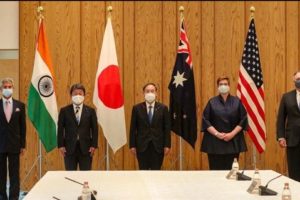 The foreign ministers of QUAD continued their discussions from the last ministerial level meeting in 2019, on 6 October, 2020. While there was no joint statement released, all countries issued individual readouts. As per the issue readout by India, the discussion called for a coordinated response to the challenges including financial problems emanating from the pandemic, best practices to combat Covid-19, increasing the resilience of supply chains, and enhancing access to affordable vaccines, medicines and medical equipment. There was also a focus on maintaining stability in the Indo-Pacific region amidst growing tensions. Australian media release mentions “We emphasised that, especially during a pandemic, it was vital that states work to ease tensions and avoid exacerbating long-standing disputes, work to counter disinformation, and refrain from malicious cyberspace activity. Ministers reiterated that states cannot assert maritime claims that are inconsistent with international law, particularly the United Nations Convention on the Law of the Sea (UNCLOS).”
The foreign ministers of QUAD continued their discussions from the last ministerial level meeting in 2019, on 6 October, 2020. While there was no joint statement released, all countries issued individual readouts. As per the issue readout by India, the discussion called for a coordinated response to the challenges including financial problems emanating from the pandemic, best practices to combat Covid-19, increasing the resilience of supply chains, and enhancing access to affordable vaccines, medicines and medical equipment. There was also a focus on maintaining stability in the Indo-Pacific region amidst growing tensions. Australian media release mentions “We emphasised that, especially during a pandemic, it was vital that states work to ease tensions and avoid exacerbating long-standing disputes, work to counter disinformation, and refrain from malicious cyberspace activity. Ministers reiterated that states cannot assert maritime claims that are inconsistent with international law, particularly the United Nations Convention on the Law of the Sea (UNCLOS).”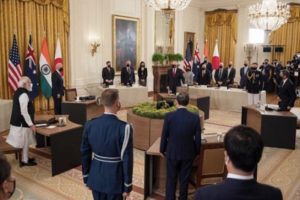 On September 24, President Biden hosted Prime Minister Scott Morrison of Australia, Prime Minister Narendra Modi of India, and Prime Minister Yoshihide Suga of Japan at the White House for the first-ever in-person Leaders’ Summit of the QUAD. The leaders released a Joint Statement which summarised their dialogue and future course of action. The regional security of the Indo-Pacific and strong confidence in the ASEAN remained on the focus along with response to the Pandemic.
On September 24, President Biden hosted Prime Minister Scott Morrison of Australia, Prime Minister Narendra Modi of India, and Prime Minister Yoshihide Suga of Japan at the White House for the first-ever in-person Leaders’ Summit of the QUAD. The leaders released a Joint Statement which summarised their dialogue and future course of action. The regional security of the Indo-Pacific and strong confidence in the ASEAN remained on the focus along with response to the Pandemic. 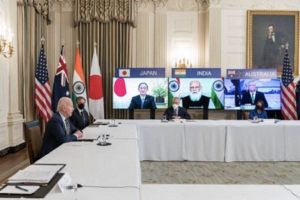 The QUAD Vaccine Partnership was announced at the first QUAD Summit on 12 March 2021 where QUAD countries agreed to deliver 1.2 billion vaccine doses globally. The aim was to expand and finance vaccine manufacturing and equipping the Indo-Pacific to build resilience against Covid-19. The launch of a senior-level QUAD Vaccine Experts Group, comprised of top scientists and officials from all QUAD member governments was also spearheaded.
The QUAD Vaccine Partnership was announced at the first QUAD Summit on 12 March 2021 where QUAD countries agreed to deliver 1.2 billion vaccine doses globally. The aim was to expand and finance vaccine manufacturing and equipping the Indo-Pacific to build resilience against Covid-19. The launch of a senior-level QUAD Vaccine Experts Group, comprised of top scientists and officials from all QUAD member governments was also spearheaded.  Although the Tsunami Core group had to be disbanded on fulfilment of its purpose, however the quadrilateral template that formed remained intact as a successful scaffolding of four countries, as stated by authors Patrick Gerard Buchan and Benjamin Rimland in their diplomatic brief about QUAD ( you can access the brief at
Although the Tsunami Core group had to be disbanded on fulfilment of its purpose, however the quadrilateral template that formed remained intact as a successful scaffolding of four countries, as stated by authors Patrick Gerard Buchan and Benjamin Rimland in their diplomatic brief about QUAD ( you can access the brief at 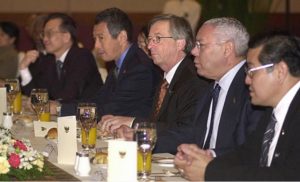 Secretary of State Colin Powell stated that the Core Tsunami Group was to be disbanded and folded and clubbed with the broader United Nations led Relief Operations. In a Tsunami Relief Conference in Jakarta, Secretary Powell stated that
Secretary of State Colin Powell stated that the Core Tsunami Group was to be disbanded and folded and clubbed with the broader United Nations led Relief Operations. In a Tsunami Relief Conference in Jakarta, Secretary Powell stated that 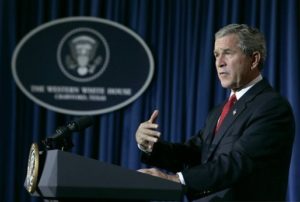 Soon after the Earthquake and Tsunami crisis, humanitarian reliefs by countries, viz., US, India, Japan, and Australia started to help the 13 havoc-stricken countries. The US initially promised $ 35 Millions in aid. However, on 29
Soon after the Earthquake and Tsunami crisis, humanitarian reliefs by countries, viz., US, India, Japan, and Australia started to help the 13 havoc-stricken countries. The US initially promised $ 35 Millions in aid. However, on 29 At 7:59AM local time, an earthquake of 9.1 magnitude (undersea) hit the coast of Sumatra, an Indonesian island. As a result of the same, massive waves of Tsunami triggered by the earthquake wreaked havoc for 7 hours across the Indian Ocean and to the coastal areas as far away as East Africa. The infamous Tsunami killed around 225,000 people, with people reporting the height of waves to be as high as 9 metres, i.e., 30 feet. Indonesia, Srilanka, India, Maldives, Thailand sustained horrendously massive damage, with the death toll exceeding 200,000 in Northern Sumatra’s Ache province alone. A great many people, i.e., around tens of thousands were found dead or missing in Srilanka and India, mostly from Andaman and Nicobar Islands of Indian territory. Maldives, being a low-lying country, also reported casualties in hundreds and more, with several non-Asian tourists reported dead or missing who were vacationing. Lack of food, water, medicines burgeoned the numbers of casualties, with the relief workers finding it difficult to reach the remotest areas where roads were destroyed or civil war raged. Long-term environmental damage ensued too, as both natural and man-made resources got demolished and diminished.
At 7:59AM local time, an earthquake of 9.1 magnitude (undersea) hit the coast of Sumatra, an Indonesian island. As a result of the same, massive waves of Tsunami triggered by the earthquake wreaked havoc for 7 hours across the Indian Ocean and to the coastal areas as far away as East Africa. The infamous Tsunami killed around 225,000 people, with people reporting the height of waves to be as high as 9 metres, i.e., 30 feet. Indonesia, Srilanka, India, Maldives, Thailand sustained horrendously massive damage, with the death toll exceeding 200,000 in Northern Sumatra’s Ache province alone. A great many people, i.e., around tens of thousands were found dead or missing in Srilanka and India, mostly from Andaman and Nicobar Islands of Indian territory. Maldives, being a low-lying country, also reported casualties in hundreds and more, with several non-Asian tourists reported dead or missing who were vacationing. Lack of food, water, medicines burgeoned the numbers of casualties, with the relief workers finding it difficult to reach the remotest areas where roads were destroyed or civil war raged. Long-term environmental damage ensued too, as both natural and man-made resources got demolished and diminished.
No responses yet